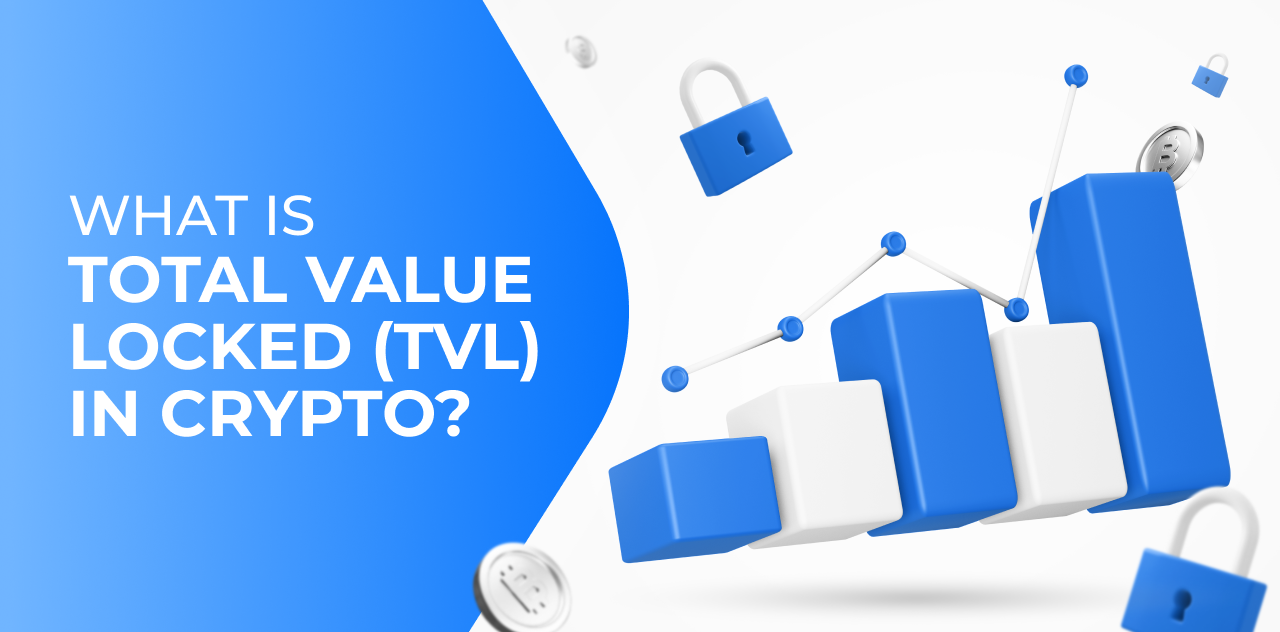What is TVL (Total Value Locked) in Crypto? Complete Guide for Investors
As the decentralized finance (DeFi) ecosystem continues to grow, one key metric has emerged as a cornerstone for evaluating DeFi protocols: Total Value Locked (TVL). Whether you’re an investor, trader, or just a curious crypto enthusiast, understanding what TVL is and how it works can offer crucial insights into the health, popularity, and potential of various blockchain projects.
In this article, we’ll dive deep into the concept of TVL, how it’s calculated, why it matters, what affects it, its limitations, and how to interpret it for smarter investing decisions.
1. What is TVL (Total Value Locked)?
TVL (Total Value Locked) refers to the total amount of digital assets (usually in USD terms) that are currently locked or staked in a decentralized finance (DeFi) protocol. It measures the cumulative value of assets deposited by users into DeFi platforms for activities like lending, staking, providing liquidity, yield farming, or securing the network.
In simpler terms, TVL represents how much money users have entrusted to a platform. It’s an important indicator of a protocol’s usage, trust, and scale.
2. How is TVL Calculated?
TVL is calculated using this formula:
TVL = Price of Assets × Quantity of Assets Locked
For example, if a DeFi protocol has:
- 1,000 ETH locked
- and ETH is worth $2,500,
Then:
TVL = 1,000 × $2,500 = $2,500,000
TVL typically includes all assets:
- Staked in smart contracts
- Supplied as liquidity in AMMs (Automated Market Makers)
- Locked in lending/borrowing platforms
- Collateralized in stablecoins or derivatives
Most analytics platforms display TVL in USD to standardize comparisons across different blockchains and tokens.
3. Why TVL Matters in DeFi
a. Protocol Health & Popularity
A high TVL indicates that users are locking significant value in a platform, implying trust and strong demand.
b. Liquidity Measurement
Liquidity is essential for exchanges, lending, and derivatives. A higher TVL often means better liquidity, which reduces slippage and improves user experience.
c. Yield Potential
TVL can help determine how profitable a protocol is for yield farming or staking. Platforms with higher TVL tend to offer lower APYs due to dilution unless balanced by high revenue.
d. Market Sentiment
An increasing TVL suggests bullish sentiment around a protocol or ecosystem. A sharp decline in TVL can signal users pulling out funds due to risk, poor performance, or loss of confidence.
4. Factors That Influence TVL
a. Asset Prices
Since TVL is often calculated in USD, rising crypto prices can inflate TVL even if the number of tokens locked stays the same.
b. User Activity
More users staking, farming, or lending = more value locked.
c. Yield Rates
Higher interest rates or rewards tend to attract more deposits, boosting TVL.
d. Partnerships & Integrations
New collaborations, support from wallets or bridges, and integration with major dApps can drive usage and increase TVL.
e. Market Conditions
During bull markets, investors are more likely to lock funds in pursuit of yield. Bear markets often see TVL fall as people withdraw or reduce exposure.
5. TVL by Blockchain Ecosystem
Different blockchain networks compete for DeFi dominance, and TVL is a leading metric in that race.
Here’s how it typically looks (figures illustrative and subject to change):
| Blockchain | Popular Protocols | TVL Highlights |
|---|---|---|
| Ethereum | Uniswap, Aave, Lido, MakerDAO | Highest TVL overall, but high fees |
| BNB Chain | PancakeSwap, Venus | Lower fees, popular in Asia |
| Avalanche | Trader Joe, Benqi | Fast finality, growing ecosystem |
| Polygon | Aave, Quickswap | Ethereum-compatible, low fees |
| Arbitrum | GMX, Radiant Capital | L2 scaling solution with growing TVL |
| Solana | Marinade, Jito | High-speed L1, now recovering TVL |
| Fantom | SpookySwap, Geist | High DeFi activity at one point |
You can track TVL across blockchains and protocols via websites like:
6. TVL vs. Market Cap: What’s the Difference?
While both are important metrics, they measure different things:
| Metric | Measures | Used For |
|---|---|---|
| TVL | Value locked in a protocol | Usage, trust, liquidity |
| Market Cap | Total token supply × price | Valuation of the token |
Example:
If a protocol has a TVL of $1 billion and a token market cap of $500 million, the ratio of Market Cap/TVL = 0.5, which may indicate undervaluation.
TVL ratio is often used to evaluate if a DeFi token is overvalued or undervalued relative to its actual usage.
7. Limitations of TVL
Despite its usefulness, TVL has some drawbacks:
a. Price Dependency
TVL rises and falls with crypto prices, which can give a false impression of usage changes.
b. Double Counting
If a protocol borrows tokens and stakes them in another protocol, the same asset may be counted more than once.
c. Doesn’t Measure Profitability
A protocol may have high TVL but low revenue, making it unsustainable.
d. Token Inflation
Some protocols artificially boost TVL through high APY rewards that inflate token supply but reduce long-term value.
8. Best Practices for Using TVL in Analysis
- Compare across competitors: Use TVL to compare similar DeFi projects in the same niche (e.g., DEXs, lending).
- Track trends: Look at TVL over time, not just a single day snapshot.
- Check token incentives: Understand if the TVL is driven by real demand or just temporary incentives.
- Use with other metrics: Combine TVL with user count, fees generated, and developer activity for full analysis.
9. TVL in NFTs and GameFi
TVL isn’t just limited to DeFi. Some GameFi and NFT platforms also use it to show how much value is staked in their economies.
For example:
- Staking tokens to play games or earn NFT rewards
- Liquidity pools for NFT trading
However, due to the illiquid nature of NFTs, TVL in this space is less reliable and less used compared to DeFi.
Conclusion
TVL (Total Value Locked) is one of the most important metrics in the DeFi world. It offers a clear picture of user trust, protocol utility, and capital allocation. While it has some limitations, when combined with other metrics like revenue, active users, and tokenomics, TVL can provide powerful insights into where value is being created in the crypto ecosystem.
As a smart investor, don’t just chase high TVL — understand the why behind the number. Dive deeper into what drives growth, what incentivizes user behavior, and which protocols are truly sustainable over the long term.




